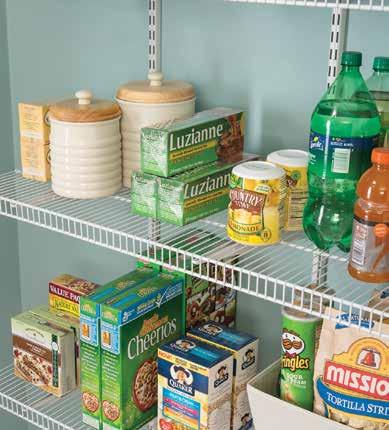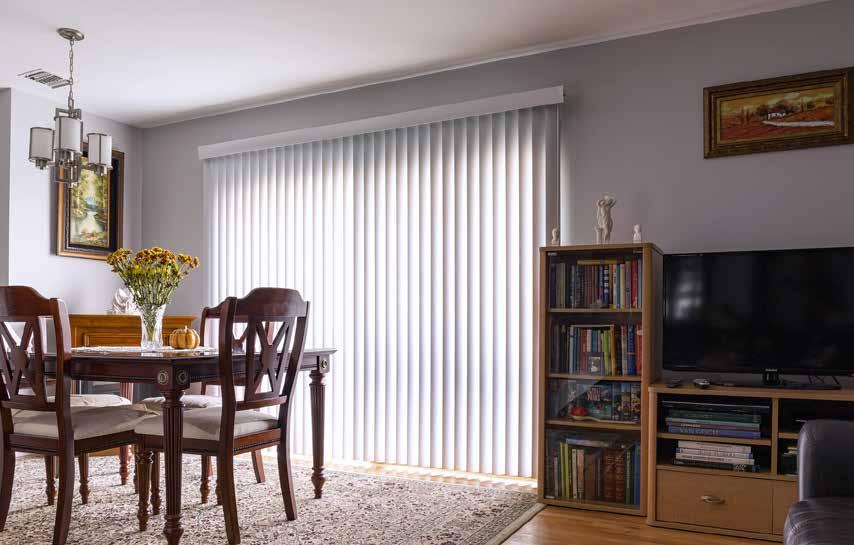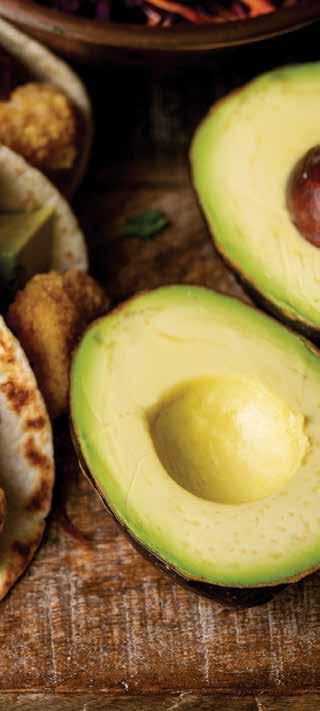
7 minute read
Spruce Up for Spring
SPRUCE UP FOR SPRING Fresh ideas for home upgrades
Spring means it's time to start sprucing up your home and garden with a little TLC inside and out. If you're unsure where to begin, consider these tips:
Make function a priority. While aesthetic changes may boost value and please the eye, be sure to consider upgrades that make living easier, like organization units that give you more space or upgrades that create additional living space.
Keep budget in mind. Make a list of the projects you'd like to complete and estimate how much each will cost. Use the list to determine what you can afford to complete now.
Do your research. If you'll be making a significant purchase such as a new vacuum or grill, be sure to explore your options, read reviews and shop around for the best prices for greater confidence in what you choose.
Set yourself up for a more enjoyable spring with more home and garden tips at eLivingtoday.com.
HANDS FREE SPRING CLEANING
For busy households, an all in one vacuum and mop robot like the Deebot N8+ is a perfect daily companion to help automate spring cleaning. It features high suction power (but low noise), TrueMapping technology to create an efficient cleaning path and the OZMO Mopping System to remove 99.26% of bacteria with dual vacuuming and mopping. Controllable with a smartphone app, it includes an Auto Empty Station for months of hands- and maintenance-free cleaning. Learn more at ecovacs.com/us.
ENHANCE THE SPACE UNDER YOUR DECK
Optimize the space beneath an elevated deck by adding a drainage system such as Trex RainEscape. Designed to capture and divert water, this system protects a deck's substructure from moisture damage while creating dry space usable for storage or an additional living area. Homeowners can safely add gas lines and wiring to accommodate grills, appliances, ceiling fans, lights and entertainment components to create an outdoor oasis. For more information, visit TrexRainEscape.com.
PERFECT YOUR PANTRY
Cleaning out your pantry is an important step during spring cleaning as it allows you to discard expired items and rethink the space. Start by reorganizing and simplifying the area with ClosetMaid ventilated shelving like this Pantry Organizer. Built with the ShelfTrack system for a fully adjustable space along with close mesh to help prevent items from tipping over, it includes four 4-foot-by-16-inch shelves, a hang track and all necessary hardware. Find more information at closetmaid.com.
GET READY TO GRILL
A grill's lifespan depends on many factors, including where and how it is stored and your climate. When it's time to upgrade, you'll have some decisions to make. The biggest is which heating style you prefer: gas, electric or charcoal. Other considerations include the overall size, number of burners and
grate quality. Also be sure to compare available features, such as side burners and igniters, which are fairly common, and upgrades like lighting and fuel gauges.
WHEN TO UPDATE HOME & GARDEN GOODS
Investing in quality products, properly maintaining and storing them all have an impact on how long they'll stay in good working condition. As you tackle spring cleaning this year, take stock of your common home and garden equipment to determine what may need updating.
Lawn Mower: If your mower needs a repair that exceeds its value, it's time for a replacement. However, there may be other signs that an upgrade is warranted. Rough operation, frequent breakdowns or other indications of faulty performance deserve a second look. Before you buy new, remember to check your warranty to determine whether repairs might be covered.
Vacuum: Many homeowners discard their used vacuum when it stops picking up dirt and debris as efficiently as it did originally. Before you move on, be sure to check that performance issues aren't the result of clogged hoses or a filter than needs cleaning or replacing. A belt may also be worn or need adjusting. Other signs it may be time to replace the vacuum include damaged or frayed cords, motor issues like overheating or making strange noises.
Grill: A grill may last anywhere from 5-15 years, depending on the quality of the materials and how it is maintained. However, it's common to have to replace parts along the way. Signs you may need a new grill include a firebox (the main enclosure) with cracks, rust or holes and burners that distribute heat unevenly. Damaged grates can affect even
Photo courtesy of Family Features

Photos courtesy of: Getty Image

grilling if they're warped or if they're flaky or rusted, they can contaminate food. If you're not able to replace the grates, or any other essential part, including hoses and connectors for a gas grill, you'll be better off replacing the unit.
BILLY’S TIPS For a Showcase Lawn
Now that warmer weather has arrived in the Poconos, you’re likely spending a lot more time in your backyard. If you don’t love your lawn just yet, don’t worry, I’m here to help. Whether you’re planting a new lawn or just reseeding, here are some helpful tips to help your lawn look lush.
While a lawn can be reseeded at any time, it’s best to do so once ground temperatures are warm. This will allow the grass seed to germinate more quickly. Germination times vary depending on the type of seed you choose. For example, perennial ryegrass germinates within just 5 to 10 days, while fescue takes approximately 10 to 14 days. Bluegrass, on the other hand, takes even longer to germinate which is why a mixture of grass seed is often preferable when using bluegrass.
When reseeding a lawn, first prep the area by raking the existing soil or applying a layer of fresh topsoil. Fertilizer and lime can also be beneficial depending on your soil’s pH. Once you’ve spread your grass seed, lightly rake, roll, or tamp the seed into the soil. Then, cover the newly seeded area with straw or a paper mulch to help ensure that your new grass seed stays in place. The amount and frequency of which you will need to water your grass seed will depend on the weather and precipitation levels. It is best to water new grass seed in the morning when possible. Whether using a sprinkler or manually watering your seed, once the water begins to puddle, move to the next area and repeat.
If you have existing grass to mow, avoid the area that you’ve reseeded to start. If you used straw during the seeding process, resist the urge to rake it when you see grass begin to grow. Otherwise, you risk tearing out your new grass. When the area is finally read to be mowed, it’s best to mow right over the straw and mulch it into your grass. After four to five rounds of mowing, you won’t even notice the straw! Once your grass is fully grown, you may notice that you need to reseed areas where too much straw was laid down. Simply follow the above steps again for any existing bare areas. That’s it - your lawn will be looking beautiful before you know it!
Edited by: Jamie Marra
Canfield’s Pet & Farm
315 Main Street, Stroudsburg, PA 570-421-1821

Saving
HOUSEHOLD ENERGY
By: Roseanne Bottone
Electric rates are influenced by the price of fuel, and consumers have no influence over that variable. The following tips are things you can do that are under your control to manage usage. Give them a try to lower your bills and conserve environmental resources for the rest of the summer:
COOLING
• According to energy.gov you can save 5 – 10 percent on your cooling bill by setting the temperature on your thermostat to 78° F, and using fans to feel 4° cooler. During the summer your ceiling fan should be running counter clockwise. Turn the fans off when you leave the house – they only cool people and not the space.
• Use a programmable thermostat to automatically raise the setting by 10° F while you’re out and back down again about an hour before you return. Close the vents in the rooms you’re not using. • Use shades, blinds and drapes to keep the sun out. Reposition your furniture so it’s not blocking vents.
LAUNDRY
• Tame the laundry. About 90 percent of the energy used to wash clothes is used to heat water. Consumer Reports rates specially formulated cold-water detergents as performing the same or better than traditional detergents. As an added bonus, you’ll save 40 cents a load. Plus, the Sierra Club estimates that each household switching to cold-water washing will eliminate 1,600 pounds of carbon dioxide emissions a year.
• A lint-free dryer filter will improve air circulation and quicken drying. Don’t over-dry clothes; use the auto-dry feature rather than the timer.
LIGHTING AND APPLIANCES
• Did you know that if every American replaced their five mostused light fixtures and/or bulbs with Energy Star® products we would save $8 billion in energy costs each year?










